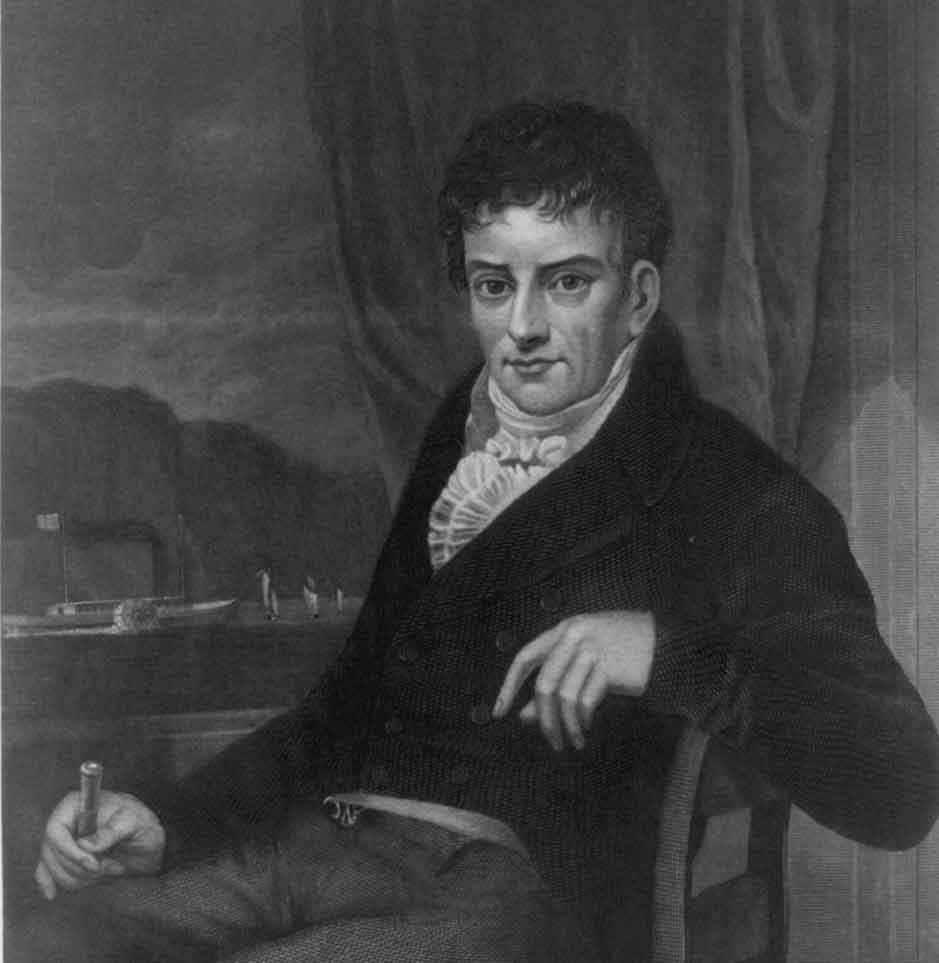Fulton, Robert

Fulton, Robert (1765-1815) Inventor: Robert Fulton was born in Little Britain Township, now called Fulton, in Pennsylvania. The son of an Irish immigrant, he explored his interest in mechanics and invention from his childhood. At the age of thirteen, he successfully devised paddle wheels for a fishing boat. Between 1782 and 1785, he lived in Philadelphia and worked as a painter; making miniature portraits and landscapes, as well as mechanical and architectural drawings. Among his friends in Philadelphia were Benjamin Franklin. In 1786, he went to London, where he studied painting with the great American painter and teacher, Benjamin West. While working as a painter in England, Fulton came under the patronage of the Duke of Bridgewater and the Earl of Stanhope, two men with strong interests in mechanics and engineering. His friendship with these individuals led to his beginning experiments in mechanics. In 1794, he obtained a patent for a double-inclined plane for raising or lowering boats from different levels in a canal system; as well as a patent for a mill to saw marble. Among his other patented inventions in Britain were a machine for spinning flax, a dredging-machine, a passage boat, a despatch boat, and an amphibious boat to be used on canals. In 1796, he published a treatise entitled, "Treatise on the Improvement of Canal Navigation," copies of which he sent to various officials in the United States, including the President. In 1797, after traveling to Paris, he conducted experiments on the Seine with a boat for submarine navigation, designed for use in torpedo warfare. When he was unable to blow up the British ships that sailed along the French coast with his submarine vessel, he abandoned his efforts in that direction. The British government and, later, the American government helped support his continuing research with torpedoes. Although he was finally successful in blowing up a ship with a torpedo, his system was never adopted. He turned his attention to steamboats, having launched a faulty one on the Seine in 1803. Having moved to the United States, he made another effort. This attempt was successful in that the steamboat moved, but at a very low speed. Fulton ordered an engine from England,. then tried his steamboat out another time. On August 11, 1807, Fulton placed his "Clermont" on the Hudson River in New York State, and it steamed from New York City to Albany in 32 hours. A great success, the "Clermont" began commercial trips up and down the Hudson in the autumn of 1807. Unfortunately, Fulton's success created many enemies for him, so that many disputed the originality of his ideas and designs, trying to rob him of the profits from his work through lawsuits and competition. Although many others introduced steamboats of different varieties before Fulton, only Fulton can be credited with making the steamboat a practical conveyance for passengers and freight. Fulton continued to supervise the construction of other vessels, and, in 1814, he submitted plans to the Coast and Harbor Defense Committee to build a steam warship. He began working on modifications to his submarine boat, the "Nautilus." While crossing the Hudson River after testifying in New Jersey in a steamboat case, he was exposed to cold, and became ill. Without finishing his plans for the "Nautilus," he died in New York on February 24, 1815.
